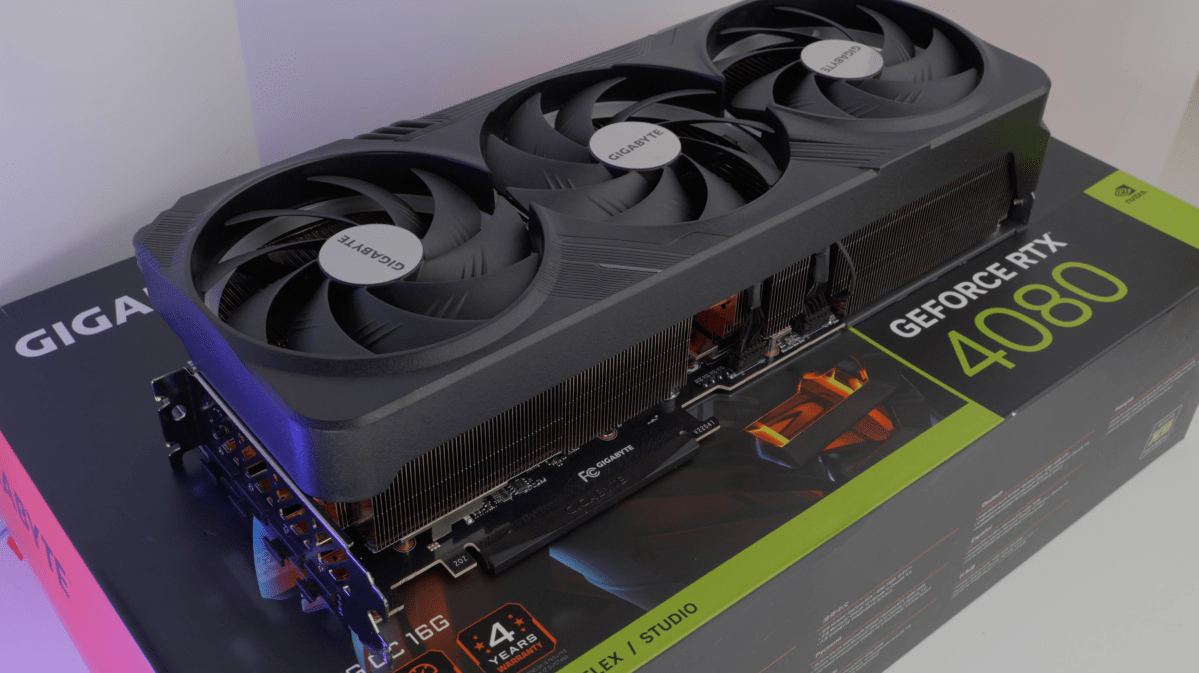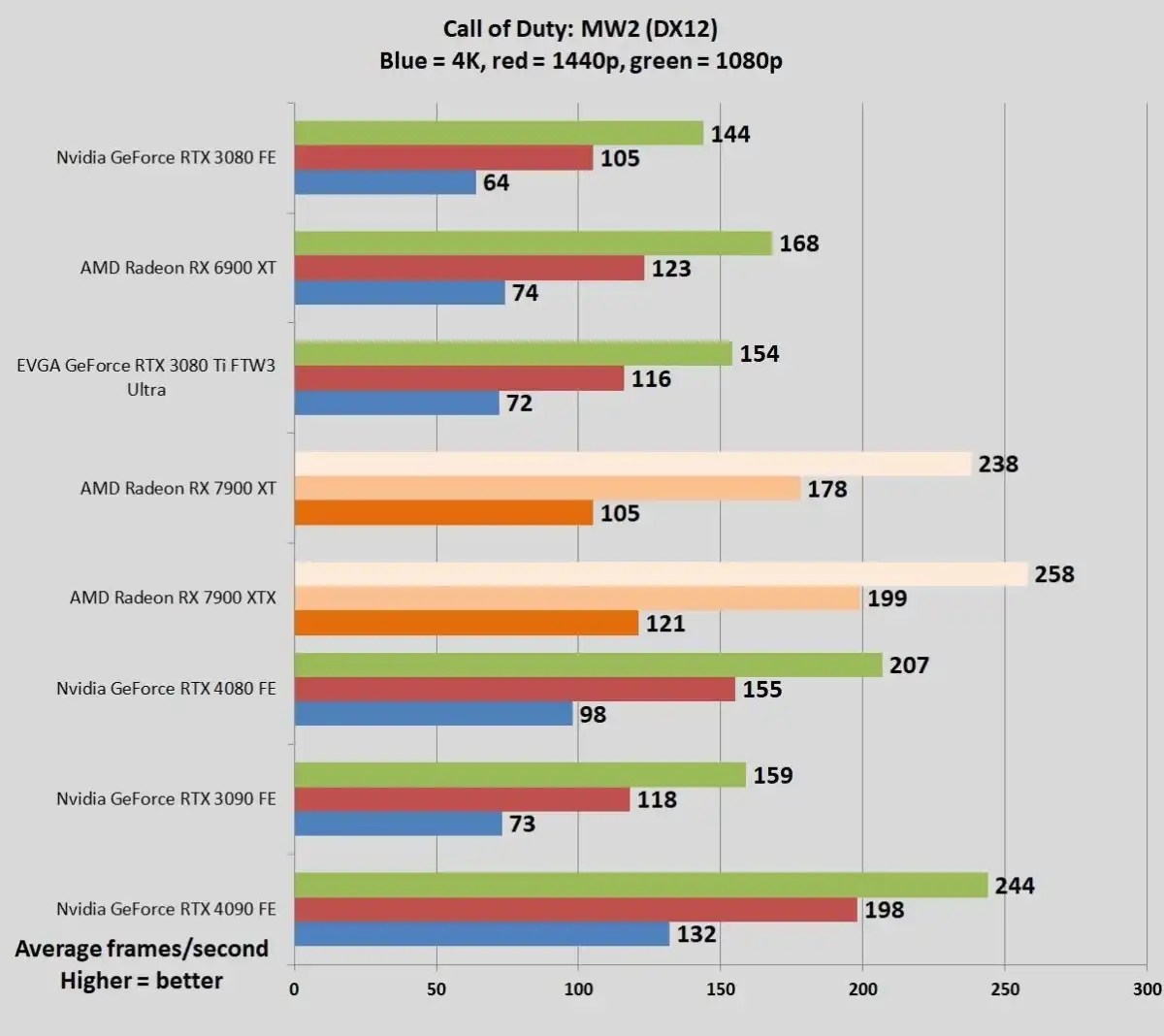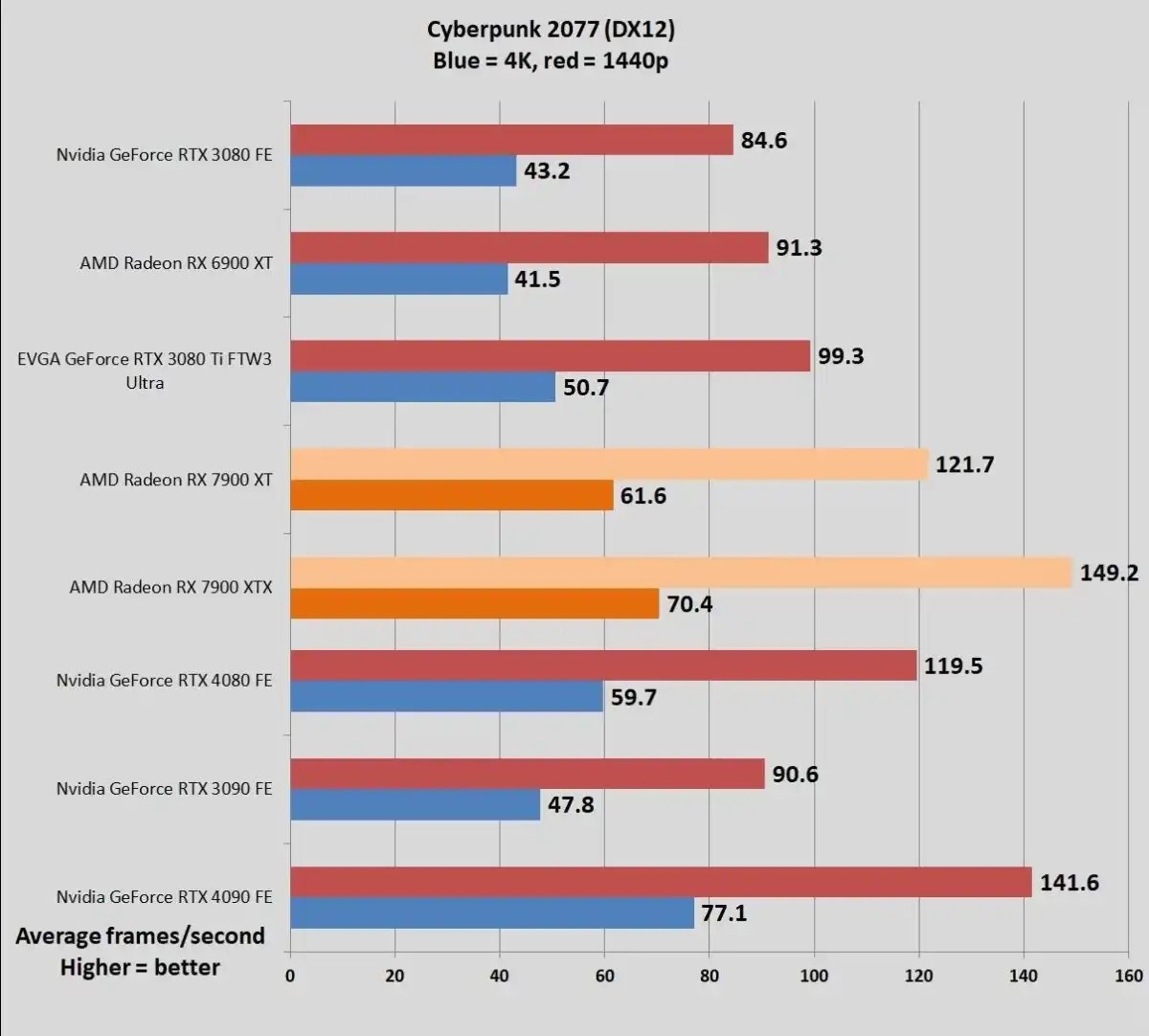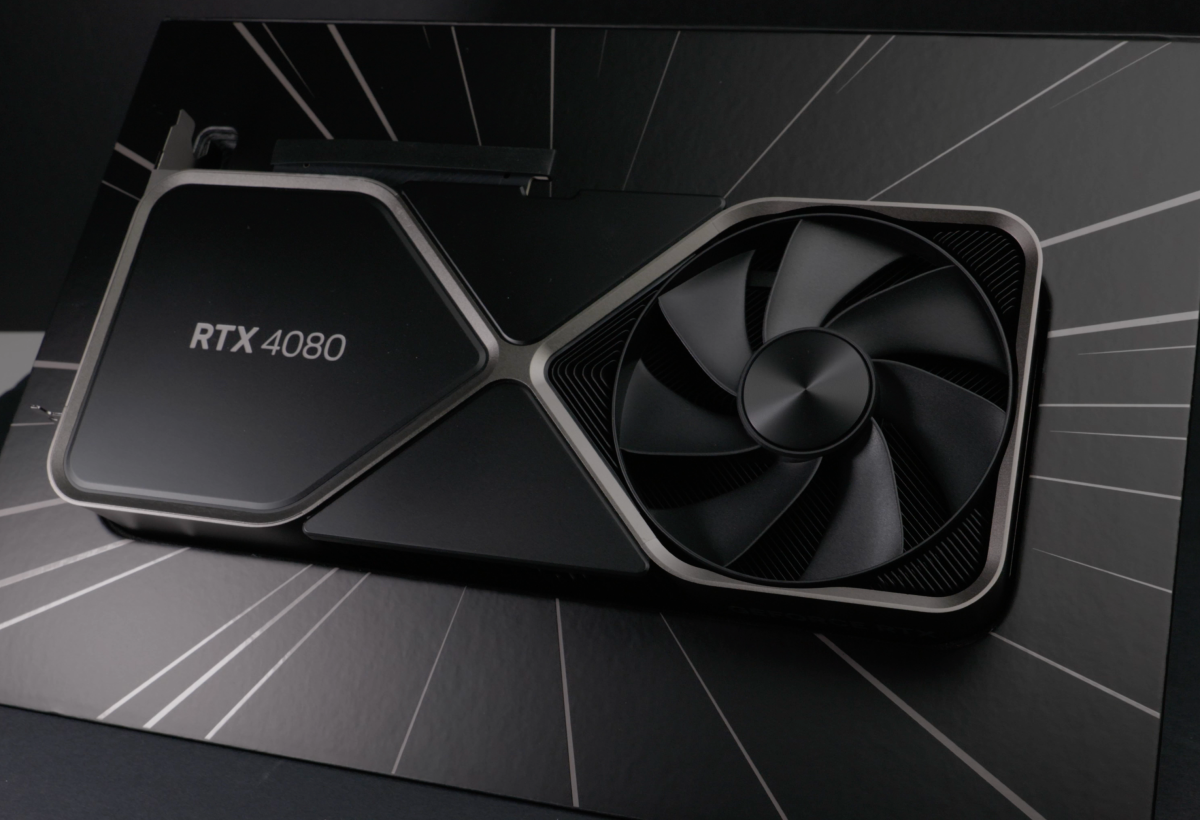Nvidia GeForce RTX 4080 vs. RTX 3080: Which should you buy?
When the Nvidia RTX 3080 10GB was released, there was tremendous excitement for this $699 powerhouse. When it was “reborn” as the RTX 3080 12GB, with a huge jump in price, the enthusiasm was dampened. The $1,499 RTX 3090 had many questioning whether its price was “worth it,” but it sold well enough during that time due to its “best in class” status.
In 2022, the Nvidia RTX 4080 arrived at $1,199. But the days of extreme GPU shortages have passed. That era propelled the RTX 3000 GPUs to sell in massive quantities at absurd prices. Can the RTX 4080 succeed with similarly absurd pricing?
Let’s dig a little bit deeper, and compare the RTX 4080 to its predecessor, the RTX 3080. We’ll look at the availability and pricing of each in the context of its time, performance for the dollar, and ultimately try to “figure out” where the RTX 4080 currently stands.
Thiago Trevisan
Nvidia RTX 4080 vs. RTX 3080: Price and availability
$699 for an RTX 3080 is great, perfection even. Good luck finding that 99.9 percent of the time during 2020 to 2022, however. The RTX 3080’s entire legacy is tarnished by being born in this unfortunate time of the “Great GPU Shortage” or whatever you’d like to call it. It was more likely to cost two to three times its MSRP on the secondhand market for most of its production.
It was refreshed as the RTX 3080 with 12GB of VRAM and a few upgraded specs, but it also saw retail pricing over $1,200 initially. The minor spec bump certainly did not justify its substantial price increase, which was caused by everything from lockdowns, to manufacturing delays, crypto-mining demand, and gamer demand.
How has the RTX 4080 fared in comparison? It picked up where the 12GB 3080 left off—with high pricing. The quickly cancelled RTX 4080 12GB came in at $899, which would have been closer to the original RTX 3080—had it not been a vastly cut-down model not worthy of the RTX 4080 moniker.
In Brad Chacos’ excellent review, he immediately pinpoints the problem: It is waaaaaay too expensive. Is it an impressive GPU? Sure. At $1,199 however, it disappoints and scores an “own goal.”

The RTX 4080 has a pricing issue.
Thiago Trevisan
How does this affect availability? The good news is that you’re much more likely to find an MSRP retail version of the RTX 4080 across various retail channels in stock. The bad news is that this is because of its poor perceived value, meaning you probably shouldn’t buy it.
Where does the RTX 4080 versus 3080 stack up in our debate so far? It’s a draw, and here’s why: The $699 RTX 3080 never realistically came to deliver on its awesome price-to-performance proposition, by being perpetually “out of stock.” Likewise, the RTX 4080 comes “out of the box” at a much higher price than gamers are willing to pay, relegating both to the same fate.
Nvidia RTX 4080 vs RTX 3080: Performance
OK, price and availability aside, how does the performance of the RTX 4080 fare against the RTX 3080? It’s somewhat lukewarm, eclipsed by the ridiculous gains showcased by the RTX 4090. (Now we’re playing with power!)

Thiago Trevisan
We’d have to compare the RTX 4080 to the more realistic RTX 3080 12GB that had a similar street retail price, instead of the lofty $699 RTX 3080, which was unobtanium. With the original RTX 3080 10GB, in a game like Call of Duty Modern Warfare 2, you’d get a nice bump from 64fps to 98fps at 4K. Non-ray traced Cyberpunk 2077 goes from 43fps to a more playable 59fps.

Thiago Trevisan
Very modest, expected generational gains while sticking to a similar price bracket as the 12GB 3080. Compared to the aforementioned $699 RTX 3080, these results for the $500 price increase are disappointing.
Let’s take a step further and play to the RTX 4080’s strengths. It has the chops (latest Ai Tensor cores) to handle ray tracing and technologies such as Nvidia’s DLSS 3.0 with aplomb—is it enough?

Thiago Trevisan
The RTX 3080 managed an unplayable 15fps with ray tracing Ultra at 4K. The RTX 4080 bumps that up to a still fairly unplayable 29fps, effectively doubling the performance. DLSS brings the RTX 3080 to 42fps, and the RTX 4080 to a much better 66fps.
While the RTX 4080 is now playable at these intense settings, the performance gains are still the minimum we’d expect for these prices and generational gains. Alas, the only better option is the beefier RTX 4090—but that will also cost a good deal more.
Brad Chacos points out that the RTX 40 series average gain is 30fps, more than the RTX 3000’s 20fps gains with DLSS, due to the better efficiency. Still, these are expected improvements and still make the price of the RTX 4080 hard to fully rationalize.
The RTX 4080 is also capable of DLSS 3.0, with Ai Frame generation, a very exciting bit of technology. In supported games such as Microsoft Flight Simulator 2020, you can see massive gains that start to edge the RTX 4080 out against any other GPU save for the RTX 4090.
I tested Flight Simulator on a 5120x1440p ultrawide monitor, on Ultra settings the RTX 4080 got 69fps. When using DLSS 3.0 with Ai Frame generation, this went up to a whopping 151 with DLSS balanced! That is an impressive improvement, and the future looks bright for DLSS 3.0—with more maturity, it can start to change the narrative on the RTX 4080 performance, too.
Let’s not forget content creation. In Adam Taylor’s review, we can see that the RTX 4080 gets a sizable lead versus the RTX 3080 in Davinci Resolve. While your mileage may vary depending on the software you’re using, the math may be different for non-gamers when looking at impressive performance gains on the RTX 4080 in some use cases.
Nvidia RTX 4080 vs. RTX 3080: Power and other things to know

Thiago Trevisan
The RTX 4080 has some impressive efficiency for the performance that it’s putting out, handily beating the RTX 3080 without compromise. Both share the same TDP of 320 watts, demonstrating how impressive the RTX 4080 is when considering it is often double or more the performance metrics versus the RTX 3080.
Yes, it does have that weird power adapter, and it often shares the huge cooler designs from the RTX 4090. While you may have much more trouble fitting it in most PC cases, one benefit is that on average the thermals and noise performance on the RTX 4080 are also impressive.
While the RTX 3080 never ran as hot as the RTX 3090, it still had GDDR6X VRAM that often performed poorly thermally due to inconsistent thermal pad applications. That problem seems like ancient history with the RTX 4080, which has an overkill cooler for its TDP.
Nvidia RTX 4080 vs. RTX 3080: The verdict
Newer GPUs like the RTX 4080 are always “better” objectively than their predecessors. Better rasterization, ray tracing, DLSS 3.0, efficiency, the list goes on.
Where we come in is in deciding if these technical improvements merit the pricing and actual real-world results.
The RTX 4080 falls short when viewed in its complete form. The $1,199 price pushes it too far outside of any reasonable “price-to-performance” expectations for an 80-class GPU, and there are many factors at play here. The GPU shortages of recent times caused plenty of problems, including a surplus of RTX 3000 GPUs during this year. DLSS 3.0 and ray tracing are getting more impressive as they mature, so the RTX 4080 has room for improvement here as new drivers release, to be fair.
The RTX 3080 is no prince charming, either. It’s $699 MSRP was merely a teaser that almost never saw the light of day, and its more expensive 12GB refresh had minimal improvements to justify the uptick in cost.
What’s the verdict? It’s a draw, the 80-class of GPUs have too many murky issues surrounding their existence to make either generation an obvious favorite. The favor seems to have jumped to GPUs such as the GeForce RTX 4090, which have unparalleled performance regardless of their higher pricing. Whether we’ll get a sub-$1,000 “darling” GPU that hits price-to-performance hard this year is anyone’s guess, but we surely need it!
For all the latest Technology News Click Here
For the latest news and updates, follow us on Google News.
